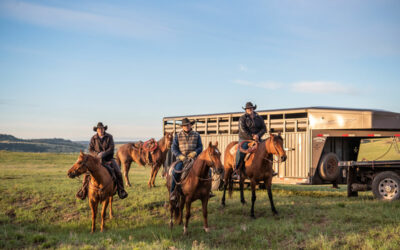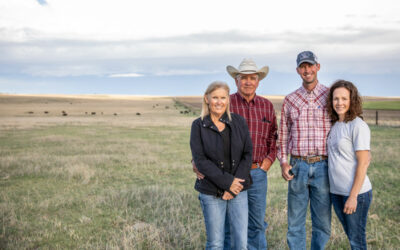
Accuracy key to AI
March 13, 2011
Hey fellow seekers,
We started using artificial insemination (AI) on registered Simmentals in the 1980s, just going with the most promoted sires and advice from friends. I was pretty clueless, and the cattle were not flushed with enough calories to allow much success—30% was tops. Going commercial and increasingly Angus, I used no AI for 12 years, but started taking AI seriously about 10 years ago.
As for sire selection, I have a CAB bias to include marbling above breed average (but why wouldn’t you?). It’s still about promotion, too, because those are the bulls that get used and develop higher accuracy (ACC). Mike Kasten got me thinking about that first, but I finally saw how important ACC is after conversations with University of Missouri animal scientist and breeding systems innovator David Patterson last year.
Crossbreeding, especially if not done right, can be an obstacle to long-term herd improvement. “You could ride along with the average improvement in the rotating sire breeds,or use AI to get the best from each sire breed, but then cleanup would complicate 40% of each crop of heifers,” he said. I nodded but thought, “Huh?”
Patterson was saying if you keep only from the best combination of weaning, carcass and breed-back in cow families, you will see those cow families eroded as ‘did not settle to AI’ or failed to rebreed in the less predictable F1s. After the third generation, only 20% of heifers could have three generations stacked for anything. So make sure you are stacking accurately!
Stacking has been a goal here, but I wondered if it does any good to try it with “sons of” proven sires? I asked Sally Northcutt, genetics expert with the American Angus Association.
“I see accuracy as a tool to manage how extensively you want to use a bull in your cowherd,” Northcutt said. “Each breeder should have targets not only for EPD levels but also for accuracy. Sometimes the new genetics of the breed may not have highest accuracy levels for all traits. Yet each breeder can select a suite of traits with primary emphasis matched to their cow herd genetics.” They can set target intervals for accuracy by using the Association’s “possible change” table.
For example, a sire with an accuracy of .35 and birth weight EPD of +.5 is expected to have his “true progeny” value fall within ±1.71 pounds for birth weight EPD (ranging between -1.2 and +2.2)—about one-third of the time. A sire with an accuracy of .20 and marbling EPD of +.18 is expected to have his “true progeny” value fall within ±.24 units for marbling score EPD (ranging between -.06 and +.42)—about one-fifth of the time.
That’s better ACC than you get in most of the bulls you buy. It takes DNA assist to get them up to that accuracy; I know because ours have settled in to .05 ACC for many traits. By contrast, the popular sire Mytty In Focus has a birthweight EPD of -1.3 with a bankable .99 ACC. Use the Angus accuracy tables to compare unproven with proven sires. No wonder Patterson was disappointed when well-meaning producers wanted to use a neighbor’s new bull that had been collected.
We will stick with high-ACC AI sires here, and try to buy cleanup bulls in the upper percentiles for all of the economically important traits, because we know they may slip below average in actual progeny results.
Until next time let’s aim for profit, target the brand and build tomorrow together.
~Steve
You may also like
The Competitive Drive
The Bootheel 7 brand that marks the hips of the Wasserburger’s cow herd could stand for the seven state wrestling titles held between three boys in the fourth generation, but that mark far predates their competitive drive. It’s been the brand carried by Wassserburgers looking for the ‘W’ since the homesteading era.
Following Second Dreams
Cow work, genetic improvements and breeding plans are on the table for hours because building the perfect cow takes constant adjustments to the plans they lay out. The Larsons are working on a masterpiece that moves their families and customers closer to “best” every day. Their determined journey toward elusive perfection helped Larson Angus Ranch earn the CAB 2022 Seedstock Commitment to Excellence award.
Following the numbers
Diversification proved to be key in evolving the ranch. What began as an Angus-based commercial herd, the trio took signals from the data and sought new avenues for revenue. The Woolfolk men have a target: creating more high-quality, profitable cattle. As for how to get there? They’ll continue to follow the numbers.



